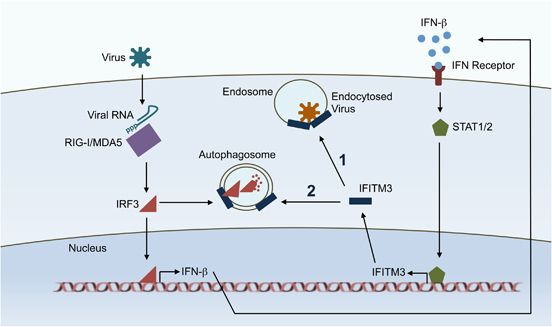Figure 1.

Dual functions of IFITM3 in the innate antiviral immune response. Cellular sensors, such as RIG-I and MDA5, detect virus infection. These proteins recognize viral products, including RNA bearing uncapped 5′-phosphates. Subsequently, the transcription factor IRF3 is activated and is translocated to the nucleus for induction of IFN-β. Secreted IFN-β signals through its receptor via STAT proteins and induces production of IFITM3 and other IFN-stimulated genes. IFITM3 blocks the membrane fusion of endocytosed viruses, such as influenza virus (function 1), and is newly shown to promote IRF3 degradation in autophagosomes, providing feedback inhibition of the IFN-β induction pathway (function 2).
